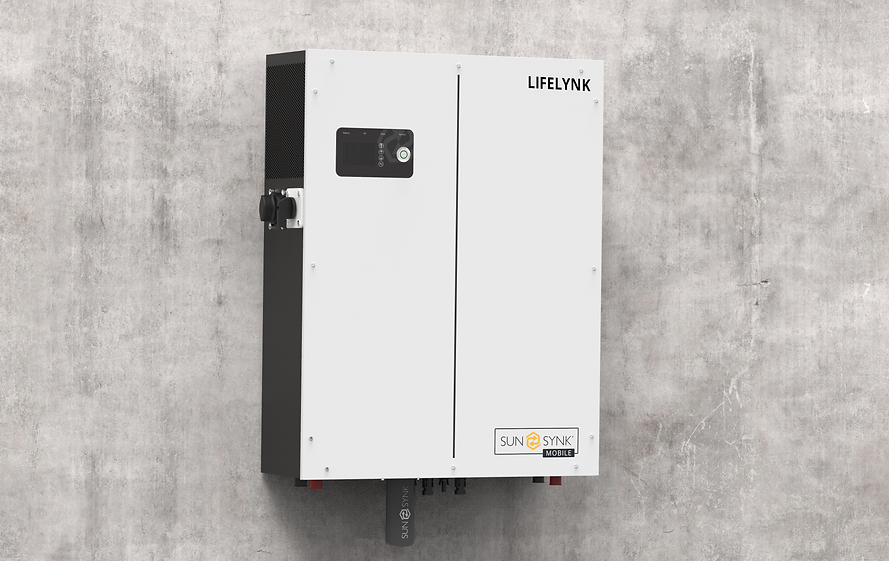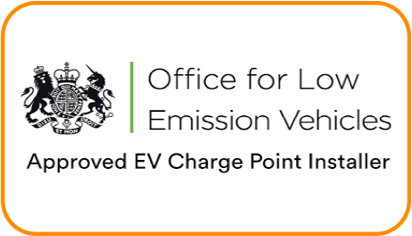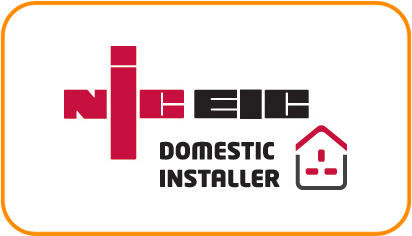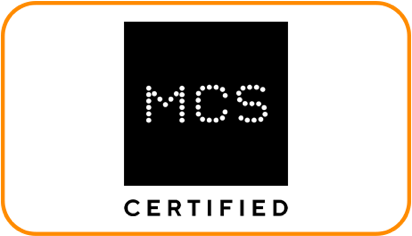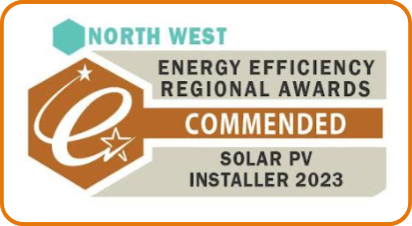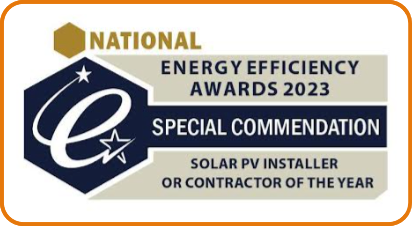Increasing numbers of UK homeowners are looking to solar power as a cost-effective renewable energy solution. But is it possible to put solar panels on a flat roof?
The good news is that, if you have a flat roof, you can absolutely have solar panels installed. Specialised mounting equipment can be used to secure and angle the panels for optimal sunlight exposure. However, it’s important to check that the roof can support the weight of the system. For best results, have your solar panels fitted by a reputable, MCS certified solar PV installer such as Contact Solar.
In this guide, we’ll discuss everything you need to know about putting solar panels on a flat roof (UK). Read on to discover how the installation process works and what to consider before investing in your own flat roof solar system.
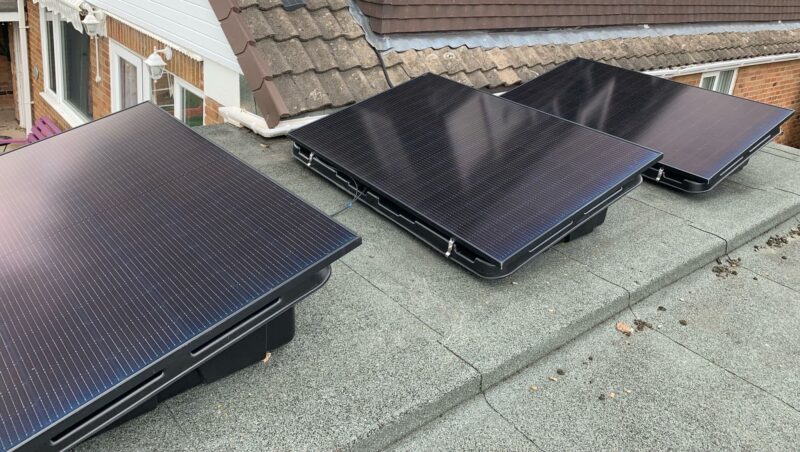
Can You Get Solar Panels for Flat Roofs?
You don’t need a special type of solar panel for a flat roof installation. Standard solar PV panels that you would install on a sloped roof can also be installed on flat roofs. The only difference is the way they are fitted.
On traditional sloped rooftops, solar panels are fitted to follow the natural pitch of the roof. However, on flat roofs, the panels need to be mounted at an angle of at least 10 degrees from horizontal. This is because when installed flat, solar panels are less efficient, as they receive less sunlight throughout the day. They may also experience buildups of water, snow, dust, leaves and dirt, which can prevent light from reaching the panels.
Additionally, unlike on sloped roofs, flat roof solar panels must be installed with space between each row. Otherwise, each row may cast shade over the row behind, which can reduce the efficiency of the entire array.
Fortunately, if angled and spaced correctly, solar panels work just as well on flat roofs as on sloped roofs. Professionally installed flat roof solar panels can offset a significant portion of a property’s electricity bills year-round, even in winter.
How Does Flat Roof Solar Installation Work?
There are various mounting systems that can be used to install solar panels on flat roofs. The right method will depend upon various individual factors, such as the location and structure of the building.
Ballasted mounts, sometimes called sun tubs or buckets, are a common and cost-effective way to fit flat roof solar panels. One of the most popular products used by professional installers is the Renusol ConSole+. These hollow tubs are made from tough plastic and are wedge-shaped to provide a built-in angle of around 15 degrees.
The sun tubs are placed onto the roof and filled with ballast to weigh them down. Bricks, rocks, concrete slabs or bags of gravel may be used. Then, the solar module is screwed securely onto the bucket, ensuring even weight distribution.
For certain flat roof types, metal solar panel mounting frames may be used instead. These can be screwed or otherwise affixed to the roof to provide sturdy support. Some frames are adjustable to allow installers to customise the pitch of the panel. These may be more expensive than ballasted solutions.
 |
 |
Pros and Cons of Solar Panel Flat Roof Installations
Solar provides a great source of clean, renewable energy to power your home or business. After the initial installation, all electricity generated is 100% free, and solar panels require very little maintenance.
Investing in a solar system is a great way to shrink your carbon footprint and your energy bills – no matter your roof type. However, some specific advantages of installing solar on a flat roof include:
- Cost: Some flat roof solar panel installations can be cheaper than those on sloping roofs, depending on the mounting system used.
- Access: Flat roofs offer easy access for engineers and plenty of space for a safe and speedy installation.
- Aesthetics: Solar panels on flat roofs are typically less visible from street level, making them more discreet.
- Efficiency: Different mounting equipment can be used to customise the pitch of the panels and ensure maximum efficiency.
- Flexibility: You are not as limited by the direction the roof faces – the panels can be placed at any orientation (shade permitting).
Of course, there are some potential downsides to consider too. For instance, not all flat roofs can safely withstand the weight of solar panels. Flat roof solar panel installations take up more space per kWh due to the separation required between the rows. In some circumstances, planning permission may also be required for flat roof panels (we explore this in more depth below).
Flat Roof Mounted Solar Panels: Things to Consider
If you’re considering investing in solar panels for your flat roof, there are a few key factors to consider. Here are some of our most frequently asked questions regarding flat roof solar installations.
What Are the Different Types of Solar Panels for Flat Roofs (UK)?
Most types of solar panels are suitable for flat roof mounting, including monocrystalline, polycrystalline silicon cells and thin-film technologies. As well as solar PV, solar thermal panels can also be installed to harness heat from the sun and use it to heat water.
The specification of panels depends on factors like desired system size, available space, budget and energy needs. Proper structural support is required with any flat roof solar technology to achieve optimal panel angles.
What Flat Roof Materials Are Suitable for Solar Panels?
Flat roof solar PV installations are suitable for almost any roof material or covering, including asphalt, gravel, rubber, thermoplastic olefin (TPO), metal and concrete. What matters most is the roof’s structural integrity – i.e. that it can safely bear the additional weighted load.
Before going ahead with solar panels, it’s vital to have your roof’s condition assessed by a professional. The checks should account for wind and snow load as well as the weight of the panels, mounts and ballasts.
Does Roof Size and Orientation Matter for Flat Roof Solar Panels?
To generate sufficient solar energy, flat roofs must have adequate surface area. Generally, more space is needed than for sloped roofs to allow correct row spacing and prevent inter-panel shading.
Orientation is also key. In the UK, south facing solar arrays typically receive the most sunlight throughout the day. However, east- and west-facing installations can also be very efficient. If there is some shading, solar power optimisers can be installed to mitigate its effects. The advisors at Contact Solar can design a custom system suited to your property and provide an estimate of your potential energy savings.
What Is the Best Angle for Flat Roof PV Panels?
To maximise light exposure, flat roof solar panels in the UK should ideally be placed at an angle between 15 and 50 degrees. This will allow for the greatest possible power yield while also preventing debris from building up on the panels.
The specific pitch required, however, will depend on your location. As latitude increases, so does the optimal angle to directly face incoming sunlight. Other factors that should be considered include the possibility of high winds and shading from trees and buildings.
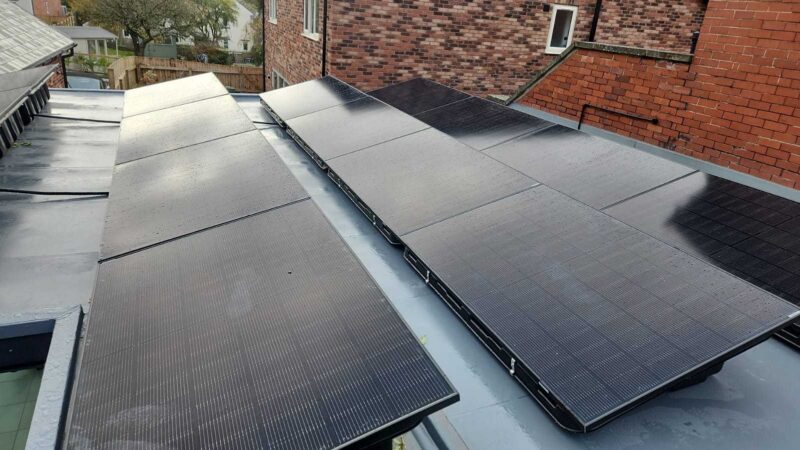
Will Wind Affect Solar Panels on a Flat Roof?
Wind uplift can be an issue for any roof-mounted solar array. Panels on flat roofs are especially vulnerable to wind forces as they do not sit flush to the roof’s surface. However, this should not prohibit flat roof solar installation, provided panels are properly mounted.
A reputable solar company will take wind into account when determining the best mounting method and angle of installation. They will ensure that the panel mounts are oriented, tilted and secured to provide optimum wind resistance, with extra ballast weight or tie-downs if necessary.
Do You Need Planning Permission to Install Solar on a Flat Roof?
In most cases, you do not need planning permission to install solar panels on a flat roof. Most UK residential solar panel installations come under ‘permitted development’, which means they do not require specific permissions. However, there are some exceptions. You may need to seek planning consent if the property is a listed building or located within a conservation area. Similar exceptions apply when installing solar panels for flats.
UK rules and regulations may differ depending on constituent country, so keep this in mind. It’s always worth contacting your local authority to confirm whether planning permission is needed.
Will Installing Solar Panels Affect My Flat Roof’s Warranty?
In general, free-standing solar panels (e.g. panels mounted using a ballasted system) should not affect your roof’s warranty. If the array is fixed using rails or frames that are drilled into the roof, however, this may not apply.
To be on the safe side, always check with your roofing company before having a solar PV system fitted. Every roofing company will have different policies and terms in place. This would also be a good time to assess the roof’s general condition and load bearing capacity ahead of the installation.
Looking to Install Solar Panels on a Flat Roof? Choose Contact Solar
Ready to start generating free, clean electricity with flat roof solar panels? If so, contact the experts: Contact Solar. As the UK’s highest rated solar PV specialists, we are proud to offer unbeatable customer service and value for money on flat roof solar installations.
Our highly-trained advisors will happily provide a free, bespoke quote based on your property and energy needs. We are fully MCS and HIES certified and work only with the best products from leading global manufacturers. With our price match guarantee, you won’t find a better deal anywhere – we’ll always beat any like-for-like competitor quotation.
Start saving on your energy bills today with Contact Solar. Call us on 0800 201 4527, email [email protected] or fill in our quick enquiry form for a free, no-obligation quote.


